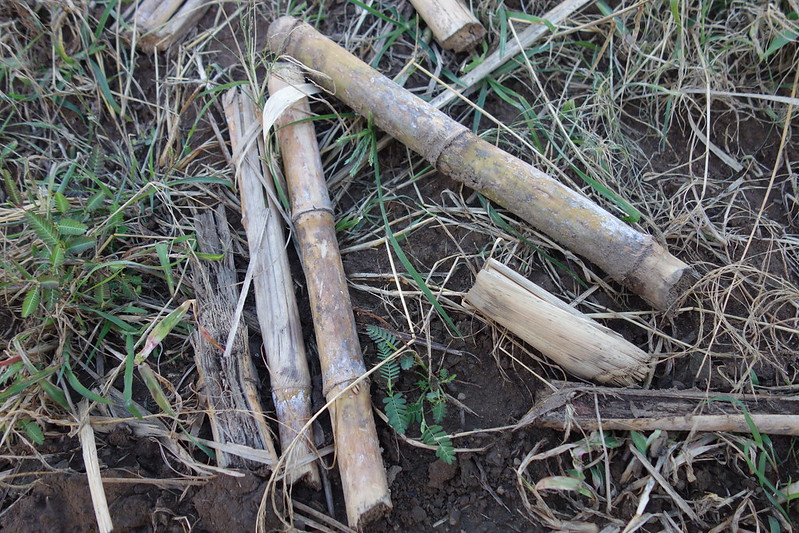Sugar Cane is a Grass (and other fun facts)
As I learn little bits each day about the life and times of sugar, en route to becoming a Cane-Nerd, I’ll post them here.
Today’s “thing wot I learnt” is this:
Sugar cane is a grass.
It grows a bit bigger than the average lawn, but yep, it belongs to the same family. According to Simon Mattsson’s Nuffield Scholarship report, it is a “perennial C4 deep-rooted grass”.
There’s a bit of info about C4 grasses here, which seem to be well suited to the tropics, as is sugar cane. The “C” in the C4 has something to do with the Carbon, and the plant’s ability to take it up. I suspect I’ll learn more about that sometime soon.
The other thing I learned this week about sugar cane is that it has a flower! In the above photo, Simon looks on as his cousin Pete from Brisbane inspects a sugar cane flower. It doesn’t look very flowery, and it’s full of seeds, and doesn’t seem to have much in the way of petals or nectar for the bees.
I asked Simon whether you can grow sugar from the seeds on those flowers. He said it’s not easy to do, they don’t germinate so well – which is why you don’t see sugar growing wild, or as a weed. (I also wonder whether the lack of easy germination of these seeds has something to do with the way they’re “engineered”? Some hints in that direction over here.)
In the cane industry sugar plants starts their life as “billets” (or “setts”), which are 25-40cm long chunks of cane, cut from the bottom of a living cane plant, and laid down under the soil:

Where the joins are in the billet, new shoots will spring up to form a “stool”, and that will be your new crop.
As a “perennial” grass, you don’t have to dig in new sugar billets every year – they will bounce back after you chop them off for harvesting. The crops that grow up in the following years are called the “ratoon”, and you can get several ratoon crops before you have to start again with fresh billets.
Some of this info (pitched at about the right level of complexity for me right now) is over here at the Canegrowers website guide for kids.

